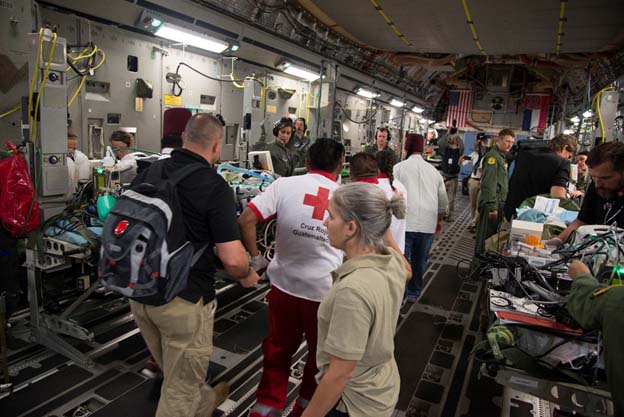Secondary analysis yields preliminary insights on evacuation strategies for combat casualties with traumatic brain injury with and without polytrauma.
In the operational environment, Critical Care Air Transport Teams (CCATT) are a lifeline for critically injured Service members. CCATT are trained to treat patients aboard aircraft under unique circumstances (e.g., turbulence, constrained resources, limited space, dim lighting, and other challenges)1. For Service members with blast injury that have sustained moderate to severe traumatic brain injury (TBI), medical evacuation is necessary to transport warfighters out of the operational environment to care facilities able to address the patient's needs. In this study, researchers conducted a secondary analysis investigating the associations between the impact of time to transport and clinical outcomes, as well as describing the occurrence of in-flight events and interventions for TBI patients without polytrauma (n = 179) versus TBI patients with polytrauma (n = 259)2.
The researchers gathered data from a retrospective cohort of patients with TBI evacuated out of theater by CCATTs from January 2007 to May 2014. The researchers found that patients with moderate to severe TBI and polytrauma that evacuated earlier experienced a higher rate of hypotension during CCATT transport. In patients with TBI without polytrauma, more in-flight interventions were necessary to stabilize the patients. More research is required to determine whether there is an increased risk for secondary insults resulting from the type of transport or the interaction between various injuries and transport times with patients that sustain these injuries, as this was not within the scope of the research.
This study provides preliminary associations that are helpful in understanding the challenges of in-flight care for patients with moderate to severe TBI, both with and without polytrauma. In addition, transport teams may use this research to make decisions about where and when to resuscitate to reduce the possibility of secondary insult. For example, TBI patients with polytrauma may benefit from in-theater treatment and stabilization instead of during CCATT evacuation. With more research, CCATTs may leverage this information to improve the quality of care provided to critically injured patients in transit.

1 AFMS Capability: Critical Care Air Transport Team. Air Force Medical Services. Retrieved May 2022 from https://www.airforcemedicine.af.mil/Platforms/AFMS-Capability-Critical-Care-Air-Transport-Team/
2 Ng, P.C., Araña, A.A., Savell, S.C., Davis, W.T., Cutright, J., Perez, C.A., Bebarta, V.S., & Maddry, J.K. (2022). Evacuation Strategies for U.S. Casualties with Traumatic Brain Injury (TBI) with and without Polytrauma. Military Medicine. https://doi.org/10.1093/milmed/usab543
The study was funded by the Defense Health Agency Research and Development (J-9) - Project # J917EC05
Your 15 minute session will timeout in approximately 10 minutes.
If you're in the middle of entering information, please close this warning and save your progress (if possible) or finish up your task.
If your session fully times out, you will lose any un-saved work.
Your current Blast Injury Research Program session has expired.
Your next click will take you away from the private area, and you will lose any work you have in-progress.
Please enter your email address, and try again.